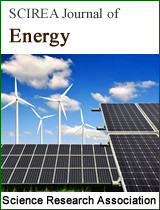Assessment of Heavy Metal Enrichment and Degree of Contamination in Play grounds and market of Duza Twin Village, Anka, Zamfara, Nigeria
DOI: 291 Downloads 13244 Views
Author(s)
Abstract
Phase-by-phase Post-remediation exercise of Duza twin village was conducted to determine the success of remediation carried out by Environmental Emergency Response Mission. Present phase in this report boarders on the children playground and the village market. Ten samples from playing grounds around the village market and general surrounding in the central of the village were made to assess possibility of contamination by artisanal mining exercises in the locality. Contamination Factor(CF) and Geo-accumulation index were used to determine extent of contamination and relate such to mining ore and extraction chemical used. GeoI values obtained for Pb and Hg respectively at the market location are 1.148 and 5.013, indicating moderate contamination by Lead and extreme contamination by mercury. The output of play grounds yields GeoI of 1.76 and 4.889 for Lead and mercury respectively. This results in similar range for both locations. In conclusion, the villagers have abused the remediation done by resuming ore processing at what- ever-small magnitude to escape the prying eyes of the village authorities.
Keywords
Human health risk assessment, Geo-accumulation index, XRF analysis, Contamination Factor
Cite this paper
Hassan Isah, Girigisu Shehu, Dr. Lawal Sa’ad, Dr. Ahmad Galadima,
Assessment of Heavy Metal Enrichment and Degree of Contamination in Play grounds and market of Duza Twin Village, Anka, Zamfara, Nigeria
, SCIREA Journal of Energy.
Volume 2, Issue 2, April 2017 | PP. 42-52.
References
| [ 1 ] | Adeleken, B. and Abegunde, K. (2011). Heavy metal contamination of soil and ground water at automobile mechanic village in Ibadan, Nigeria. International Journal of the Physical Sciences; 6: 1045-1058. |
| [ 2 ] | Bose, B. and Hemantaranjan, A. (2005). Developments in physiology, biochemistry and molecular biology of plants. New Delhi, India: New India Publishing Agency. Pp 105. |
| [ 3 ] | Misra, S. and Mani, D. (2009). Soil pollution. New Delhi, India: S. B Nangia APH publishing corporation. Pp 29-59. |
| [ 4 ] | Mohiuddin, K.M., H.M. Zakir, K. Otomo, S. Sharmin, and N. Shikazono, 2010. Geochemical distribution of trace metal pollutants in water and sediments of downstream of an Urban River. Intern. J. Environ. Sci. Tech., 7 (1): 17-28. |
| [ 5 ] | Tijani, M. N., Jinno, K., & Hiroshiro, Y. (2004). Environmental impact of heavy metal distribution in water and sediment of Ogunpa River, Ibadan area, southwestern Nigeria. J. Min. Geol., 40(1), 73-83. |
| [ 6 ] | Shrivastav, R. (2001). Atmospheric heavy metal pollution, development of chronological records and geological monitoring. Accessed from www.ias.ac.in. |
| [ 7 ] | UNEP, 2010. Lead Pollution and Poisoning Crisis Environmental Emergency Response Mission Zamfara State, Nigeria . United Nations Environment Programme (UNEP) / Office for Coordination of Humanitarian Affairs(OCHA), Switzerland. |
| [ 8 ] | Voet, E.; Guinee, B. and Udode, H. (2008). Heavy metals: A problem solved?. Dordrecht, Netherlands: Kluwer Academic. Pp 4. |

